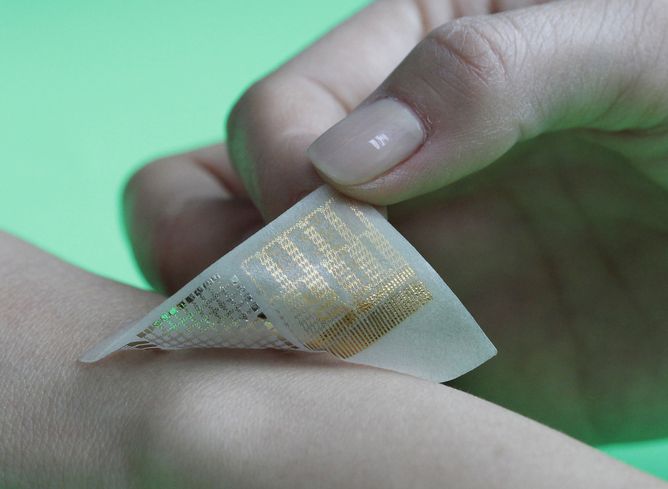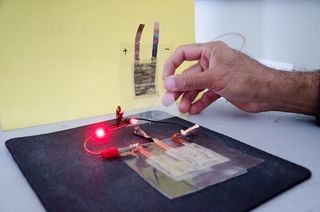
Wearable Electronic Skin Delivers Drugs and Stores Data

This article was originally published at The Conversation. The publication contributed the article to Live Science's Expert Voices: Op-Ed & Insights.
Average life expectancy has nearly doubled since 1800, thanks to progress in medicine. Most of that was made by developing drugs and improving public health services. The medical revolution of the 21st century is going to be different. With greater understanding of our genes, we will need treatments that are more personalised.
In pursuit of that goal, researchers have developed a wearable patch that can monitor your health, store and transmit data, and deliver drugs when needed. Such a device has instant applications for those suffering from diabetes or heart diseases. In the future it could be used more generally, to keep track of health.
This device, developed by Donghee Son of South Korea’s Institute for Basic Science and his colleagues, is not the first “electronic skin” device, but it is the first to be able store data and deliver drugs. The report on the device is published in Nature Nanotechnology.
The device is composed of titanium-gold particles that are smaller than a billionth of a metre. The materials are printed on the bottom side of an elastic skin patch. The heat and temperature sensors are placed on the top side of the patch and the drug delivering particles are on the lower side.
These patches are tiny (4cm long, 2cm wide and 0.3mm thick), and they can survive bending and twisting without losing functionality. Such compactness will allow patients to wear it discretely, just like a tattoo or a nicotine patch, thus improving comfort and relieving social stigma. Drugs are delivered through the skin and activated by microheaters inside the the device.

There are limitations. Right now, the device works only when it is connected to a power source. Batteries can be used, but they are bulky and inflexible, which defeats the purpose of an electronic-skin device. However, earlier this year researchers at New Jersey Institute of Technology reported the development of just such a high-performing, low-power battery. The hope is that such technology will catch up soon to deliver enough power for compact wearable devices.
Sign up for the Live Science daily newsletter now
Get the world’s most fascinating discoveries delivered straight to your inbox.
This pioneering study has shown that wearable sensors can do a lot more. It opens the possibility of diagnosing diseases and offering personalised treatment, all without having to visit the doctor.
Arpana Sagwal Chaudhary does not work for, consult to, own shares in or receive funding from any company or organisation that would benefit from this article, and has no relevant affiliations.
This article was originally published on The Conversation. Read the original article. Follow all of the Expert Voices issues and debates — and become part of the discussion — on Facebook, Twitter and Google +. The views expressed are those of the author and do not necessarily reflect the views of the publisher. This version of the article was originally published on Live Science.












